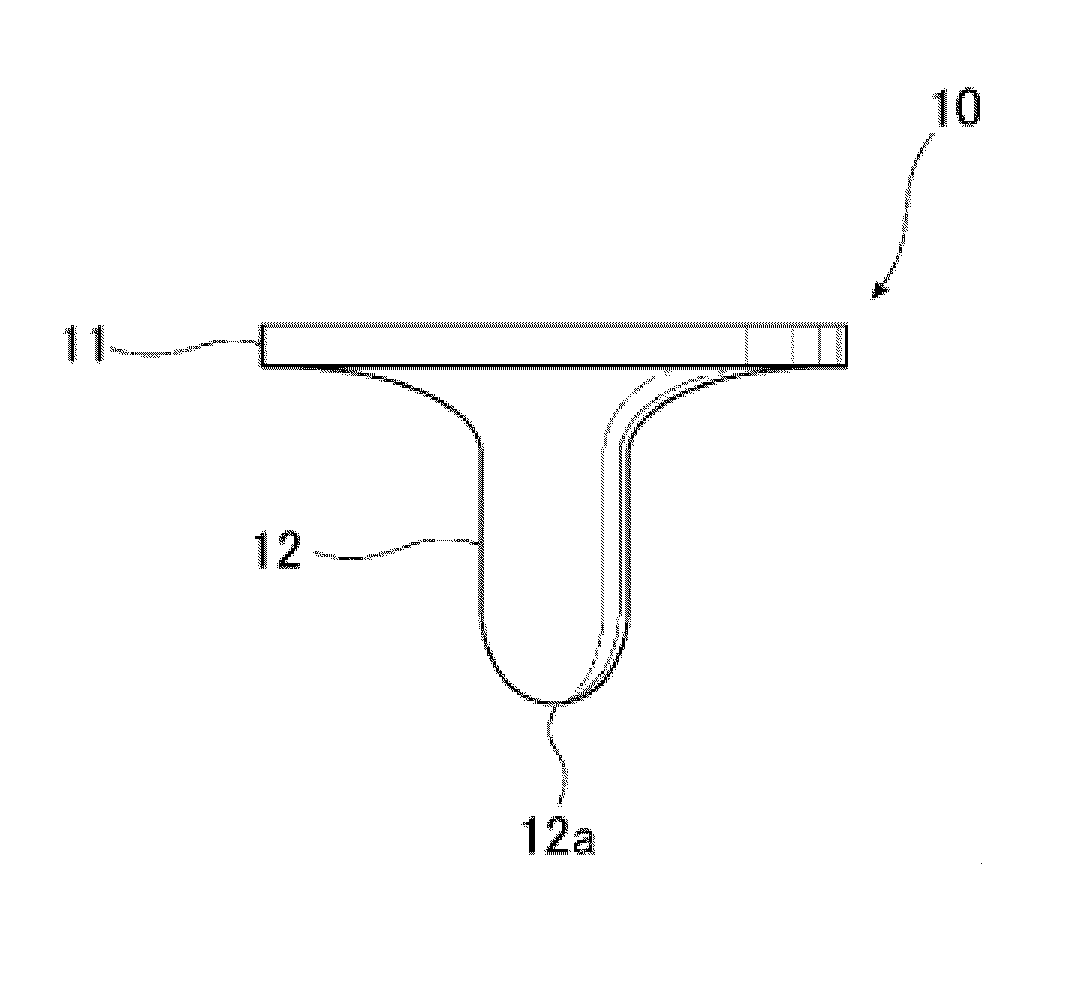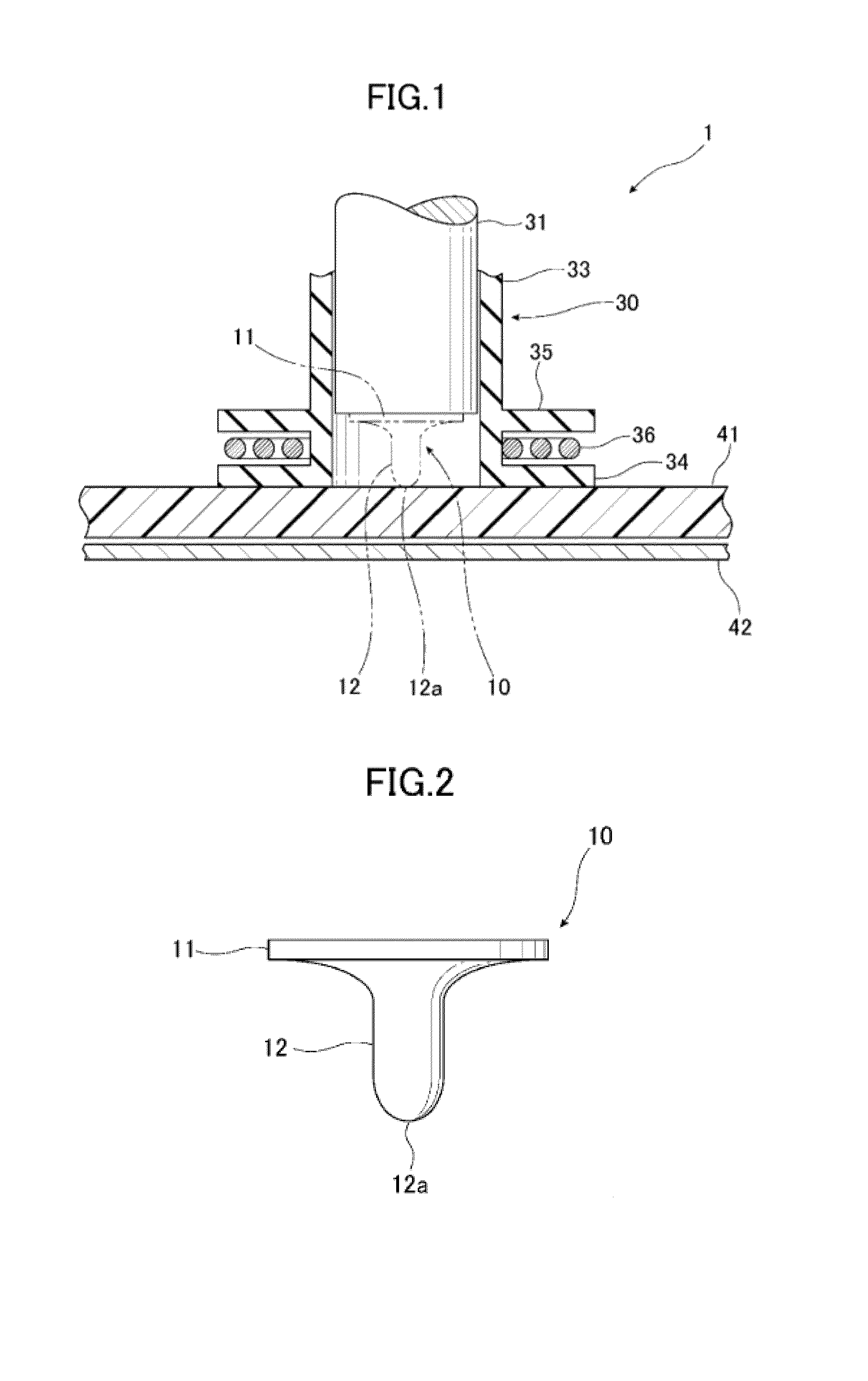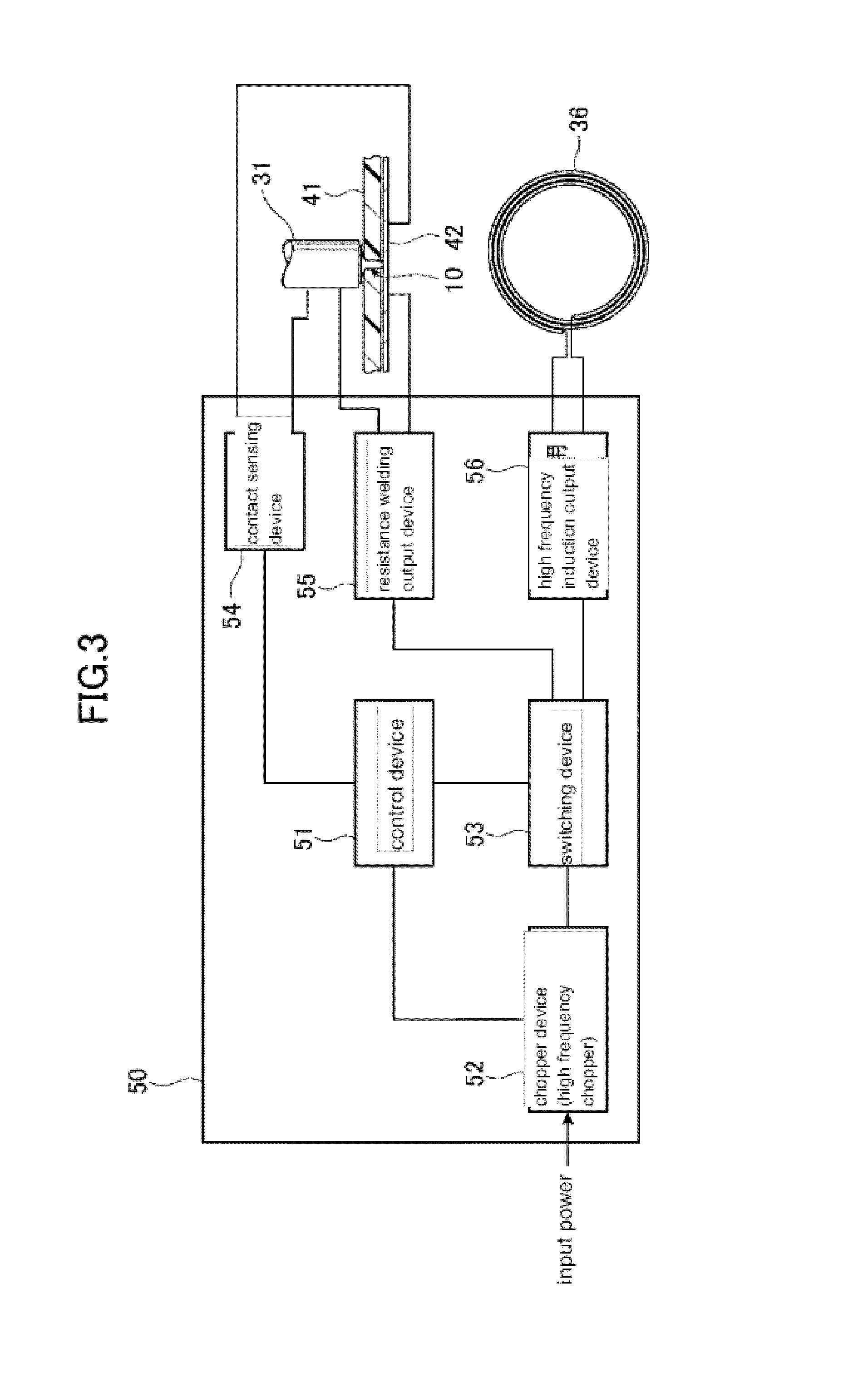Joining device and joining method
a technology of joining device and resin member, which is applied in the direction of resistive welding apparatus, metal-working apparatus, welding electric supply, etc., can solve the problems of resin member cracks, difficult to match the screw position, and difficult to maintain waterproofness and airtightness
- Summary
- Abstract
- Description
- Claims
- Application Information
AI Technical Summary
Benefits of technology
Problems solved by technology
Method used
Image
Examples
first embodiment
[0065]FIG. 1 is a cross section of the welding head portion, which is part of the joining device 1 of the present invention. The joining device 1 laminates the resin member 41 and metal member 42, heats a fastener 10 by high-frequency induction heating, press-fitting the fastener 10 into the resin members 41 as it softens and melts the resin member 41. The resistance of the joining device 1 welds the fastener 10 and the metal member 42 when the tip portion 12a of the fastener 10 contacts the metal member 42, joining the resin member 41 and the metal member 42.
[0066]The welding head comprises a nose piece 30, a high-frequency coil 36 and an electrode punch 31.
[0067]The joining device 1 may also comprise a die to receive the resin member 41 and metal member 42. When using a die, the top surface of the die is a plane for placement of the resin member 41 and metal member 42. Dies are normally made of metal. In an embodiment of the invention, resistance welding is performed under a low a...
second embodiment
[0124]In addition, the joining device 2 of the second embodiment has a chuck 37 on the inside of the nose piece 30 cylindrical portion 33. The chuck 37 is able to hold the fastener 10, separated by an interval from the electrode punch 31.
[0125]We previously explained the case in which the fastener 10 of the first embodiment is used, but it is also possible to use the fasteners 20, 20′ and 20″ of Embodiments 2 through 4 in the joining device 2 of the second embodiment.
[0126]The joining device 2 may also comprise a die to receive the resin member 41 and metal member 42. It is also acceptable that there not be a die. The metal member 42 and resin member 41 for joining are overlapped and affixed in a jig. A lower electrode for resistance welding is connected to the metal member 42.
[0127]A cylindrical nose piece 30 is positioned above the resin member 41, separated from the resin member 41 by an interval. The nose piece 30 comprises a cylindrical portion 33 and a high-frequency induction...
PUM
| Property | Measurement | Unit |
|---|---|---|
| Electric potential / voltage | aaaaa | aaaaa |
| Frequency | aaaaa | aaaaa |
Abstract
Description
Claims
Application Information
 Login to View More
Login to View More - R&D
- Intellectual Property
- Life Sciences
- Materials
- Tech Scout
- Unparalleled Data Quality
- Higher Quality Content
- 60% Fewer Hallucinations
Browse by: Latest US Patents, China's latest patents, Technical Efficacy Thesaurus, Application Domain, Technology Topic, Popular Technical Reports.
© 2025 PatSnap. All rights reserved.Legal|Privacy policy|Modern Slavery Act Transparency Statement|Sitemap|About US| Contact US: help@patsnap.com



